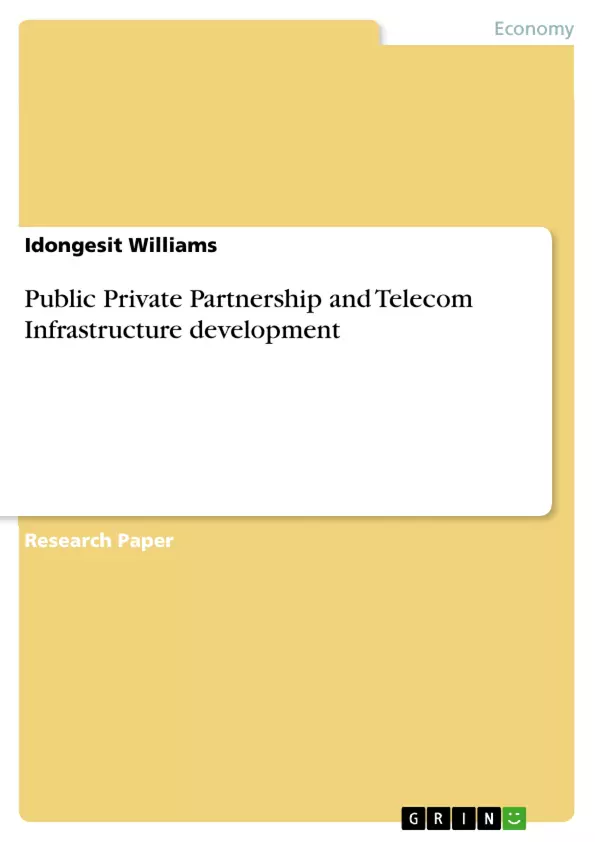This paper discusses the rational for using Public Private Partnership to develop telecommunication infrastructure. Case studies of the use of PPP in Africa and the EU is examined as a way of making the argument as to why the flexibility of PPP's can enable the development of telecom infrastructure in a more cost effective way.
Inhaltsverzeichnis (Table of Contents)
- Introduction
- A Brief Overview of PPP
- Rationale for PPP
- Efficiency in the Delivery of Infrastructure
- Utilization of Financial Investment
- Management and Control of the PPP
Zielsetzung und Themenschwerpunkte (Objectives and Key Themes)
This report examines the potential of Public Private Partnerships (PPP) in developing telecommunication infrastructure. It aims to provide a comprehensive overview of PPP, exploring its historical evolution, rationale, and various operational models. The report also delves into the management and control aspects of PPP projects, highlighting the advantages and challenges associated with this approach to infrastructure development.
- The evolution and definition of Public Private Partnerships (PPP)
- The rationale for PPP, including efficiency in infrastructure delivery and utilization of financial investment
- The role of private sector participation in infrastructure development
- The management and control of PPP projects, including the challenges of ownership and control
- The application of PPP models in telecommunication infrastructure development
Zusammenfassung der Kapitel (Chapter Summaries)
The introduction provides context for the report, highlighting the challenges of financing telecommunication infrastructure development, particularly in rural and economically challenged areas. It argues that PPP can offer a synergistic solution by combining the strengths of the public and private sectors.
The chapter on "A Brief Overview of PPP" delves into the history and evolution of PPP, examining various definitions and interpretations. It traces the origins of PPP back to pre-colonial America and explores its evolution through different phases of privatization. The chapter highlights the lack of a definitive definition for PPP due to the wide range of possible relationships between the public and private sectors.
The chapter on "Rationale for PPP" explores the primary motivations for adopting PPP models. It discusses the quest for efficiency in infrastructure delivery and the need to maximize scarce public resources. The chapter examines the advantages of PPP in promoting technical and economic efficiency, attracting private investment, and improving public service provision. It also highlights the role of PPP in ensuring financial efficiency through attracting private financing and reducing public debt.
The chapter on "Management and Control of the PPP" focuses on the ownership and control aspects of PPP projects. It discusses the ideological facets of PPP and the challenges of balancing public sector control with private sector involvement. The chapter explores the role of concessions in PPP, including the advantages and disadvantages of this model.
Schlüsselwörter (Keywords)
Public Private Partnerships (PPP), telecommunication infrastructure, infrastructure development, efficiency, financial investment, management, control, ownership, concessions, privatization, liberalization, subsidies, grants, loans, equity funding, Special Purpose Vehicles (SPVs).
- Quote paper
- Idongesit Williams (Author), 2012, Public Private Partnership and Telecom Infrastructure development, Munich, GRIN Verlag, https://www.grin.com/document/190364



